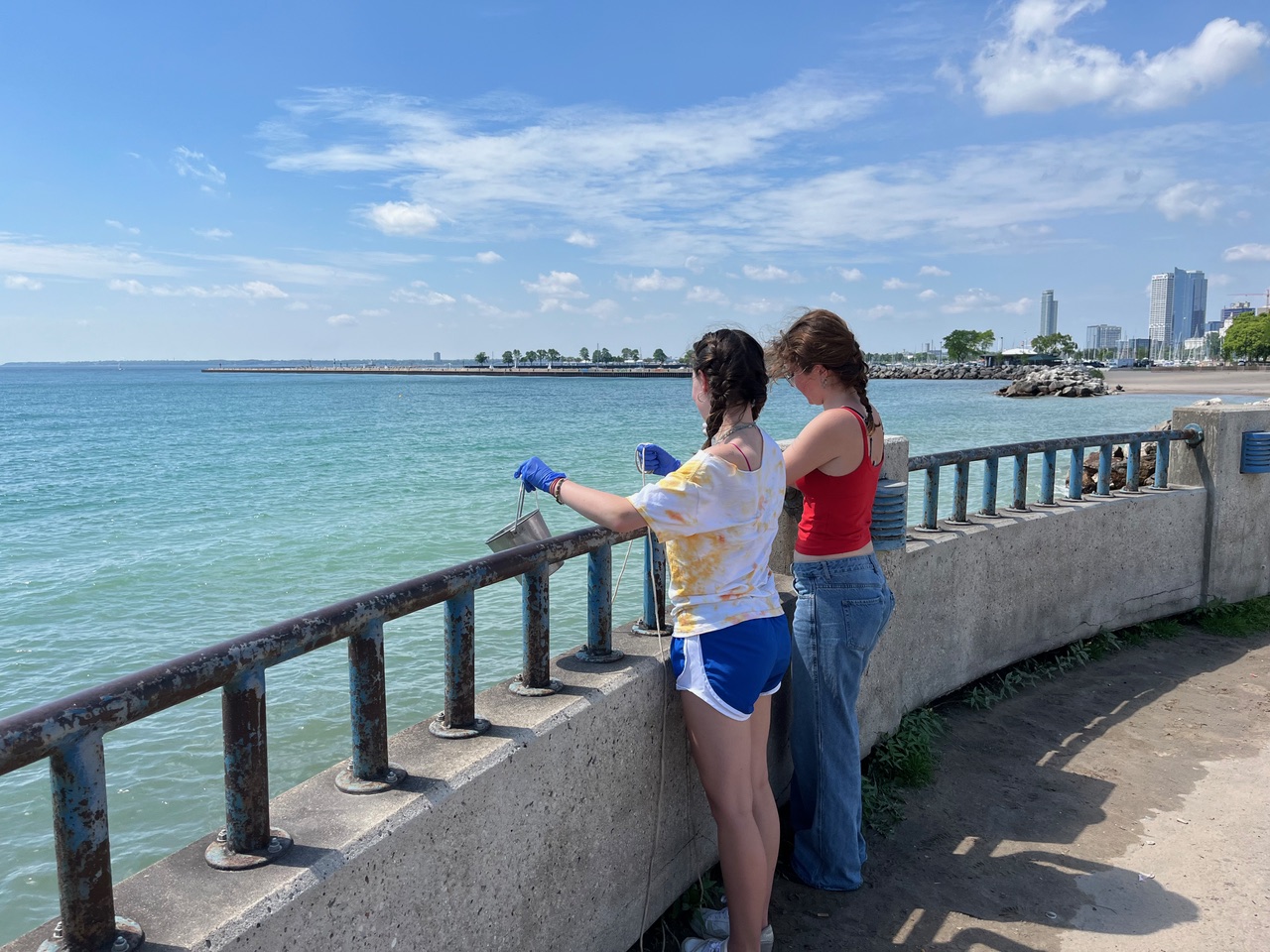Six years ago, David Hart, geographic information systems (GIS) outreach specialist for University of Wisconsin Sea Grant, hired several graduate students to create an online hydrologic dashboard that let users view spatial, geophysical and temporal storm data in the Green Bay watershed.
Hart was inspired to develop the dashboard by a big storm event that hit Duluth in October 2005, sending plumes of red clay sediment blooming out into Lake Superior.
“I wanted to know the story of what happened,” said Hart. “Where and how did the storm hit?”
Before the dashboard, motivated users could find the hydrologic data that told that story, but not in one place.
It was a great idea. Trouble was, the dashboard was programmed using Flash, a closed-source platform/plugin that’s largely fallen out of use since 2007. A few years after the student created it, the original dashboard was both broken and challenging to update.
End of story? Not quite. Enter Erin Hamilton, a 26-year-old graduate student with the UW-Madison’s department of geography. Hamilton spent much of the last year recreating the dashboard in Javascript, an open-source code that can be updated easily on multiple platforms, including and especially mobile platforms. Thanks to Hamilton’s efforts, the dashboard’s now back to full functionality—and you can view it here: maps.aqua.wisc.edu/fwhd/hydrologic.html
“The main idea of the dashboard is to give users the opportunity to view a storm event from start to finish,” explained Hamilton. ”We wanted to let people see what kinds of effects the storm has on streams as the water moves through the watershed.”
Hart and Hamilton are hoping to add more features to the dashboard, including the ability to animate the storm events–currently, users can click individual icons to view a static radar image of the total precipitation from a storm.
“What we want the dashboard to show is how a storm affects Green Bay once the storm gets through the watershed and out into the bay itself —how does it change the water there?” said Hamilton.
The dashboard’s target audience is water resource managers, who could potentially use it as a tool to help them make better decisions on planning and allocating resources to prepare for future storms events. Hart sees it as a key part of a much more expansive toolbox.
“When you put this in touch with other geotools we’re developing, we’re really building a narrative in Green Bay,” said Hart. “It could become part of a solution that would allow people to be much more engaged in stewardship of the Great Lakes.”
For Hamilton, the experience of resurrecting the dashboard helped her achieve the goal that brought her back to graduate school in the first place—improving her programming skills. She ended up getting a crash course in combining mapping libraries and visualization technologies. But it’s also opened her eyes to potential new career opportunities involving coastal resources. She’s now considering a career that involves both GIS and a natural resources focus.
“The best part was seeing what I had built work,” said Hamilton. “It’s a really amazing feeling to see something and think ‘Wow, I built that and I made it work.’ My programming skills improved tremendously, and I learned really important debugging and problem-solving skills. My programming confidence soared.”





